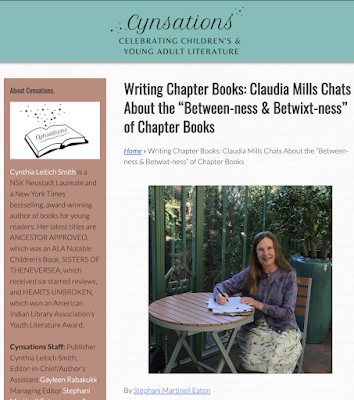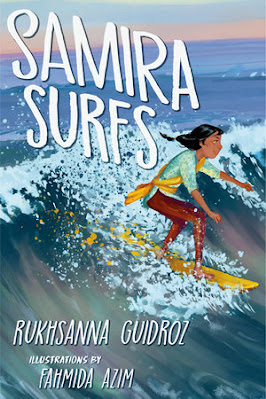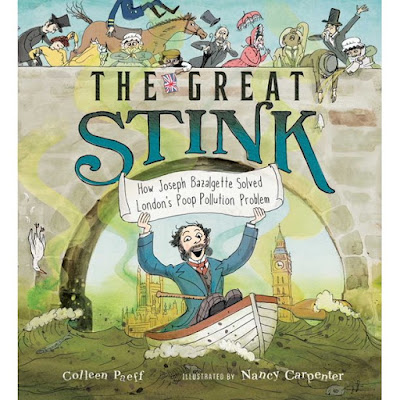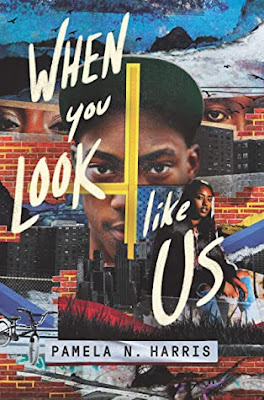The following is shared here with Bill's kind permission. You can read the original posting at Bill's website here.
Dated Feb 18, 2022
Dear Mr. and Mrs. Elliott,
I recently read with interest your call to remove 282 books from your local school library. In it, you claim to have reviewed yourself all of these books and deemed them unfit for K-12 usage (quite a range there!).
I saw that you included among these books my 2020 novel, THE BRIDGE.
First off, thank you for reading my book! I would be happy to chat with you about the book, to see what you took from it.
Second, I want to say up front that I believe your intent here is to protect your children. I echo your concern; I also want safety for children. It’s one of the main reasons I write books for young adults.
THE BRIDGE, as you know, is about two teens, Aaron and Tillie, who are severely depressed. They are both suicidal, and they meet atop the George Washington Bridge in New York City. From there, the book splits into four parts, illustrating all the possible scenarios about what could happen: they could both jump, they could both NOT jump. Or one or the other could jump. The novel follows the impacts of these decisions all the way out, so that readers can come to understand two things—just how difficult it is to be depressed and navigate the disease of depression, and also just how devastating one loss to suicide is to the whole world.
I was a bit surprised to see THE BRIDGE on your list for removal from the library. Not entirely surprised, as I was aware of Matt Krause’s list of 850 books he wants removed, which includes five of my titles. But still I was a bit startled, especially when I read your review of why the book ought to be removed.
You wrote that the book “Contains 1 or more of the following: Marxism, incest, sexual explicit material — in written form and/ or visual pictures, pornography, CRT, immoral activities, rebellious against parents, and the material contradicts the ISD’s student handbook.” As I looked through your screeds, it seems that this is how you describe each of these books. It’s as if you cut and pasted that complaint 282 times. That surprised me, because you took the time, you say, to read each of these books. That’s a lot of reading! Surely you have thoughts about these books you read beyond some cut and paste jargon?
So I want to address these concerns. While I disagree that books should be removed from libraries because some people are uncomfortable with the content, I felt it made sense to go through these since you specified your issues with THE BRIDGE.
• There is no Marxist philosophy in this book. In fact, its author is a capitalist. Of course, since we live in a free country, a book with Marxist philosophy ought to be able to exist in a library, so long as it isn’t threatening to overthrow the government. But that seems like a moot point here.
• Incest is not a part of THE BRIDGE. In fact, my book does not include explicit sexual activity, though one student at one time writes a poem about wishing she hadn’t had sex with a boy. It is not explicit. In fact, I have read a lot of young adult lit, and I know very few books that include incest, and in each of those cases, it depicts incest in order to help readers who have been through that trauma, not to glamorize it. If you wish to start a petition banning books that glamorize incest in school libraries, I might actually sign it. That’s simply not happening here.
• Sexual (sic) explicit behavior: I had to think about that one, since teens are sexual beings and sometimes have sexual thoughts. Both Tillie and Aaron have sexual thoughts, but they aren’t explicit in their thinking. No one has sex in this book. That is not what the book is about.
• Pornography: There is no pornography in my novel.
• CRT: I believe you are referring to Critical Race Theory. My book doesn’t touch on this. Some of my others do, but this book, again, is about suicide and depression. One of the characters is Korean and was adopted at a young age by a white family. At moments she describes what it feels like to be of a different race than her parents and sister, but at no point does this novel delve into theories about race or a screed about racial inequality. I do wonder what your concern is here, as my understanding is that CRT is a scary buzzword for “teaching history as it happened.” What is the problem with teaching American history, and the fact that this country was built on slave labor? What would you have books say instead? I think it is very important to learn about history. We learn about challenging times in history so that we don’t repeat them.
• Immoral Activities: Wow, that’s quite an umbrella there. We’d have to dig a bit deeper to know what you mean, but one thing I will say is that misbehaving is often central to literature, as novels always have a conflict. If you are referring, as sometimes people do, to sex before marriage, or taking street drugs, I think you will agree that these things do not happen in THE BRIDGE. I have read some books in which characters do have sex and take drugs, and my take is that it is rarely done to titillate, or to glamorize drug use. Usually in YA literature, drug use is depicted as something negative, and that is as it should be. Now, it is possible you consider Aaron’s sexuality immoral, since he’s gay, but Aaron has never had sex. So unless you are the thought police (and I’m pretty sure those people are on the Left, correct?), I can’t really see how anything about Aaron’s behavior in this book is immoral.
• Rebellious (sic) against parents: Ah. I think at one point in this book, Tillie skips school. She is depressed, and she is in a therapist’s office with her mother in the waiting room, and she realizes they want to commit her to an institution because she is so deeply depressed, and she freaks out and flees the office. This is, in fact, rebellious behavior. It is also exactly the kind of thing that could happen in the world. I read that you have an elementary school daughter. Congratulations! I don’t have kids, but I have many friends who do. If this sort of rebellious behavior is means for taking a book out of a library, I think you have some exciting and potentially difficult discoveries in front of you when your daughter reaches adolescence. I won’t spoil them. You’ll find out when you have a teenager!
• I don’t have the ISD handbook, so I don’t know what’s in it specifically. But I do think that if you want to have all the characters in novels adhere to a school handbook, you might have trouble finding novels. In THE WIZARD OF OZ, Dorothy drops a house on a witch. Is murder allowed in the handbook? In A TALE OF TWO CITIES, a French aristocrat runs down a working-class child with his carriage. I would assume this would be considered poor behavior in your district. Should we ban these books, too? Mr. and Mrs. Elliott, the truth is that stories, both fictional and non-fictional, include behaviors that might be considered outside the bounds of how schools might like their students to behave. People lie and cheat and steal. Find me a book for teenagers where no one behaves poorly, and I’ll show you a boring book!
You suggest that the libraries in your district remove THE BRIDGE from its shelves. I guess the question I want to ask, since you have read the book, is: why?
Why, exactly, are you wishing to remove a book about suicide and depression from your libraries?
Perhaps you are concerned for the safety of your students. If so, I applaud you. Health and safety of young people is at the top of my list of concerns, too. As I wrote THE BRIDGE, I spent a lot of time ensuring that I wrote my book in a way that would help teens, not trigger them by making suicide somehow glamorous or sexy. Just like a doctor, who takes an oath to “do no harm,” I take my craft very seriously. I want my books to leave the world better than they found it.
That said, we live in a society where, increasingly, young people are dying by suicide. The reasons for this are too long to go into here, but I would say that among the reasons is isolation and feeling alone and misunderstood.
Right there, in a nutshell, is why I write books for teens. I felt isolated and alone and misunderstood as a teen. I so wished there was a book out there that had a person going through what I was going through. See, I was gay. I knew I was gay because of my thoughts, not because of any book or TV show, because there were basically none of those things back when I was in school. At the time, I was depressed and suicidal because I felt so alone. So I wanted to make sure no other young person went through that.
I am concerned about the young people in the McKinney Independent School District, because in my experience, kids are the same everywhere. There are depressed kids everywhere. There are isolated, at-risk kids everywhere. There are LGBTQ kids everywhere. Getting rid of books from the library won’t change that; it will just make life that much harder and more isolated for those children.
Do you think there should be books in the library that might help a depressed teenager feel a bit more understood? A book that stresses the importance of staying another day, even when everything feels hopeless? Knowing how concerned you are for the safety of your daughter, I would actually guess you would want a book like that available to your child when she gets older. Perhaps I am wrong.
My concern is that you didn’t actually read THE BRIDGE and said that you did. I say this because your list of 282 books includes the exact same concerns for each book. That seems lazy, at best. At worst, it is deceitful, which, I imagine, goes against the ISD handbook. I certainly hope you’re not doing that! It would be hypocritical to behave in ways that go against the values we try to instill in our children.
I think you didn’t read THE BRIDGE, and that in fact you would have been better served to include a book of mine that was more focused on LGBTQ representation. Not because you would be right, but at least then we could have a conversation about why you’re wrong about that, too.
I can say with total honesty that I wish the best for your child. I want for her to have every opportunity for joy and success in life. To experience freedom and happiness.
What I wonder, though, is whether you feel the same way for kids who suffer from depression? Or for kids who are gay? The truth is that like it or not, some kids are gay. Some kids are trans. To make the world safer and better for them, we need to have representation of those people in books. Books with LGBTQ characters save lives. I know because of the hundreds of emails I’ve received from kids who have told me my books saved their life.
Perhaps you would like it better if those kids repressed those desires and didn’t act upon them. Or tried to pray the gay away. I’ve seen that movie. I have met hundreds of men and women over the course of my life who have tried to do that. It doesn’t end well for them, nor does it end well for their spouses.
You might say this is blasphemous, but here is a question for you: what if it turns out your daughter is lesbian or bisexual? You might think this is impossible; I can tell you from experience that I have met hundreds if not thousands of teens and parents in that situation. Kids from conservative, religious households. Parents who believe that marriage is between a man and a woman and anything else is immoral.
My question is, if it turns out your child is lesbian, or bi, or trans, what would you wish for them? Would you want them to feel loved and safe, or would you want them to feel alone and ashamed?
You might think now you’d prefer the latter, but I see from the fact that you are doing so much to try to keep your child safe that perhaps you might change your mind about that. According to a 2021 national study by The Trevor Project, 42 percent of LGBTQ youth considered suicide last year. The number is much higher for trans and non-binary youth. I have heard the argument that this shows that LGBTQ youth are simply troubled, but I can tell you that’s not right. LGBTQ youth are at risk precisely because of endeavors like yours that aim to erase people like them from the library.
I’ll end with a prayer for you, because I know that you are religious. I pray that you and your family find prosperity and joy. I hope that in your prayers tonight, you will pray for at-risk kids who need these books. Because in many cases, their lives depend on it.
Sincerely,
Bill Konigsberg
***
Thanks to Bill for allowing me to share this letter here.
Illustrate, Translate, and Write On,
Lee





















